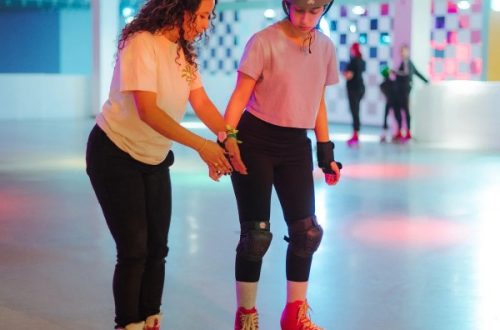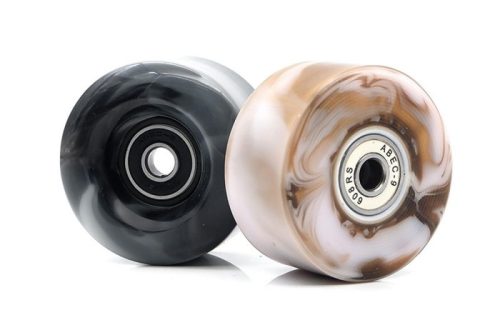Introduction to the 2×2 Rubik’s Cube
Embarking on the journey of solving a two by two Rubik’s Cube is both exciting and rewarding. Unlike its bigger counterpart, the classic 3×3 cube, this pocket-sized puzzle consists of a 2×2 grid on each of its six faces. Often referred to as the ‘pocket cube’ or ‘mini cube,’ it’s the perfect starting block for beginners. Despite its seemingly simple appearance, it can pose a challenge that is just as intriguing.
For many, the 2×2 Rubik’s Cube serves as a stepping stone to more complex puzzles. With fewer pieces to manipulate, enthusiasts can learn the fundamental techniques and algorithms required in cubing. Additionally, it’s an ideal size for on-the-go practice, fitting easily into your pocket or bag.
In terms of structure, each face of the cube has four cubes, known as ‘cubies.’ These include corner pieces that determine the orientation and color placement. As there are no fixed center pieces, the cube’s color scheme is more fluid, allowing for a different solving experience than larger cubes.
Grasping how to solve a two by two Rubik’s Cube might seem daunting at first, but this introduction will guide you through the basics. With patience and practice, you’ll be able to master the cube, impress your friends, and maybe even delve into competitive speedcubing. Let’s get started on unlocking the secrets of this fascinating puzzle.
The Basic Notations and Moves
Before we dive into how to solve a two by two Rubik’s Cube, let’s familiarize ourselves with some essential notations and moves. These form the foundation of any solving method you will use. Notations refer to the letters that denote each twist or turn you make on the cube. Knowing them is crucial to understanding and following solving algorithms.
- F (Front): The side currently facing you.
- B (Back): The side opposite the front.
- U (Up): The top layer of the cube.
- D (Down): The bottom layer.
- L (Left): The left face of the cube.
- R (Right): The right face.
Each of these notations may be accompanied by an apostrophe to indicate a counter-clockwise turn (e.g., F’ is a counter-clockwise turn of the front face), while a notation without an apostrophe indicates a clockwise turn. A digit 2 following a letter means you should turn that face 180 degrees (e.g., F2 is two turns of the front face or a half rotation).

Understanding these notations is key to executing moves accurately and efficiently as you work through the cube’s layers. As you practice, these notations will become second nature, making the process of learning how to solve a two by two Rubik’s Cube much more manageable. Remember, consistent practice is what will help you master not only the moves but also the speed at which you can solve the cube.
Step-by-Step Guide to Solving the 2×2 Cube
Great, you know the notations and basic moves. Now, let’s tackle the cube, one step at a time.
Understanding the Cube Algorithm
Algorithms are sequences of moves that manipulate the cube. They help you move pieces into the right place without messing up what you’ve already solved. Each algorithm has a specific purpose, like solving a corner or flipping an edge. Think of them as a set of moves for each ‘mini-mission’ you face in the solving process. Memorizing these will make solving the 2×2 Rubik’s Cube much easier.
Solving the First Layer
Start by choosing one color as the base. Then, find and move the corner pieces of that color to form a complete face. This is your first layer. Use the notations from before to position each corner correctly. This might take some trial and error, but stay patient. Once the first layer is complete, you’re halfway there!
Orienting the Last Layer
Now flip the cube over. You’re looking at the last layer. Here, the aim is to get all cubies showing the same color on this face. You’ll use algorithms that rotate the corners without affecting the rest of the cube. It can be tricky, but mastering these moves is key.
Permuting the Last Layer
The last step is to move these correctly oriented pieces into their final positions. You’ll permute, or shuffle, the last layer pieces around. Again, specific algorithms do this job without disturbing the solved layers. Once you’ve done this, your cube should be complete. Congratulations!
Remember, practice makes perfect. Keep at it, and you’ll get faster and more efficient.
Common Mistakes to Avoid
When learning how to solve a two by two Rubik’s Cube, it’s easy to make mistakes. These errors can slow down your progress and cause frustration. But don’t worry. Identifying and avoiding common pitfalls will help you become more proficient. Here are some mistakes to watch out for:

- Rushing Through Moves: Take your time. Fast movements can lead to misalignments and increase the time it takes to solve the cube.
- Overuse of Algorithms: Don’t rely solely on memorized sequences. Understand the purpose behind each algorithm to apply them more effectively.
- Ignoring Cube Maintenance: Keep your cube in good condition. A poorly maintained cube can hinder your solving speed and accuracy.
- Misapplying Notations: Be clear on notations. Incorrect turns based on misunderstanding notations disrupt the solving process.
- Lack of Practice: Regular practice is crucial. Without it, you won’t improve the speed and fluidity of your moves.
By steering clear of these common mistakes, you’ll enhance your puzzle-solving skills. Soon, you’ll tackle the cube with greater confidence and efficiency.
Advanced Techniques for Faster Solving
After mastering the basics of solving a 2×2 Rubik’s Cube, you may desire to accelerate your solving time. This is where advanced techniques come into play. They can significantly reduce your puzzle-solving duration, transforming you from a casual solver to a potential speedcuber. Hard work, along with a deep understanding of these strategies, is essential.
Finger Tricks and Speedcubing Tips
Finger tricks are vital for improving solving speeds. They involve using fingers in a swift and efficient manner to turn the cube’s layers. Basic finger tricks include flicking the front layer using your index or middle finger and turning the upper layer with a simple wrist motion.
Start slow. Focus on smoothness and precision before speed. As you practice, you’ll find your movements becoming more fluid. Combine finger tricks with practiced algorithms to solve sections of the cube rapidly. Remember, less movement means faster solving, so optimize each turn to make your motions as minimal as possible.
Stability of the cube is key. Hold your 2×2 cube firmly but not too tight as it may hinder the flexibility needed for quick twists. Also, keep your cube well-maintained; a smoothly turning cube complements finger tricks perfectly.
Learning From Speedcubing Champions
Watch and learn from speedcubing champions to gain insight into expert techniques. Many champions share solving sessions and tutorials online, where they break down their approaches step-by-step.
Take note of their hand placements, finger movement patterns, and decision-making during solves. They often use specific strategies for different stages of the cube solving process. These may include advanced algorithms and lookahead techniques, where they plan several moves ahead.
Learning from champions may inspire you to develop your unique style. Don’t just copy; adapt their strategies to what feels right for you. With continuous practice and learning from the pros, you’ll be on track to solving the 2×2 Rubik’s Cube with impressive speed and efficiency.

Maintaining and Lubricating Your Cube
Maintaining your 2×2 Rubik’s Cube is essential for its longevity and your solving performance. Regular care can make the cube turn smoother and faster, enhancing your solving experience. Here are the tips to keep your cube in top shape:
- Clean Your Cube Regularly: Dirt and debris can build up inside the cube, causing friction and slower moves. Disassemble the cube piece by piece and clean it with a soft cloth.
- Lubricate the Core and Pieces: Use silicone-based lubricants for the core and pieces. It reduces friction, allowing for quicker turns. Apply a small amount and work it through by turning the cube.
- Adjust Tension: If the cube feels too loose or too tight, adjust the screws at its center. Find a balance that gives you control over the cube’s movement without making it too loose.
- Avoid Humidity and Heat: Excessive humidity and heat can warp the plastic. Store your cube in a cool, dry place away from direct sunlight.
Careful maintenance will keep your 2×2 Rubik’s Cube in good condition, and proper lubrication will facilitate faster and smoother solving. Remember, treat your cube well, and it will enhance your performance significantly.
Conclusion and Encouragement for Practice
As you reach the end of this guide on how to solve a two by two Rubik’s Cube, you’ve gained valuable skills. You know the basic notations and moves, and you can guide the cube through its algorithmic dance. The journey from the first layer to the last has taught you patience and strategy. But the road to mastery doesn’t end here.
Solving the cube is like a sport; it thrives on continuous practice and dedication. Each solve sharpens your mind and quickens your hands. Over time, you’ll notice improvements — not just in speed, but in the ease and fluidity of your movements. This is the true reward of your practice: a graceful, almost effortless, dance of fingers and cube.
Remember, every champion started as a beginner. When you stumble upon a challenge, see it as a chance to grow. Mistakes are part of learning; they point you to areas that need more practice. Push through, keep solving, and track your progress. Celebrate each improvement, no matter how small.
Embrace the challenge, and don’t shy away from revisiting the basics if you need to. Share your experiences with fellow cubers and learn from each other. The cubing community is full of supportive enthusiasts who are happy to share tips and encouragement.
Lastly, always enjoy the process. The satisfaction of solving a two by two Rubik’s Cube is a feeling that never gets old. With every solve, you’re not just solving a puzzle, you’re also building confidence, improving concentration, and sharpening problem-solving skills. Keep practicing, stay curious, and who knows — perhaps you’ll inspire someone else to start their cubing journey, too.




